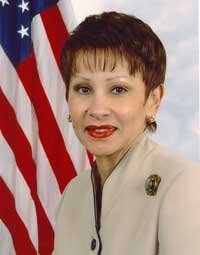Grodenchik Honors Holliswood Centenarian

Council Member Barry S. Grodenchik (D-Bayside, Queens, Bellerose, Douglaston, Floral Park, Fresh Meadows, Glen Oaks, Hollis, Hollis Hills, Holliswood, Jamaica Estates, Little Neck Oakland Gardens and Queens Village) presented Dr. Sheldon Schwartz with a New York City citation at his Holliswood home on Tuesday to commemorate his 101st birthday.
Dr. Schwartz was Chief of the Clinic of Arthritis and Rheumatism at Bellevue Hospital for more than 30 years. He became the first Chair of Rheumatology at Long Island Jewish Hospital. He built Hillcrest General Hospital and was Chief of Medicine there for 25 years.
“From building a hospital to winning sports trophies to playing a mean game of bridge, Dr. Schwartz teaches us that living life fully is key to a long and bountiful life,” said Grodenchik. “He is a pillar of the medical field, his family, and our community.”
Born in Brooklyn, Dr. Schwartz grew up playing tackle football at Richmond High School. He later graduated cum laude from Rensselaer Polytechnic Institute and enrolled in NYU School of Medicine, where he became a Professor of Clinical Medicine and fellow of the Academy of Internal Medicine.
Retirement did not slow Dr. Schwartz down. He lectured and drove well into his 90s and still stays up to date with cutting-edge medical research and journals. He has won trophies for golf, tennis, and swimming and is an accomplished artist and collector of antique Belleek pottery.
Pheffer Amato 9/11 Workers Protection Task Force Bill Passes Legislature

Assemblymember Stacey Pheffer Amato (D-Broad Channel, Hamilton Beach, Howard Beach, Lindenwood, Ozone Park and the Rockaway Peninsula) and State Senator Andrew Gounardes’s (D-Brooklyn) bill (A.10249/ S.8129) to revive and extend the September 11th Workers Protection Task Force passed both the State Senate and the Assembly last week and will be sent to the governor’s desk for his signature.
“The reinstatement of this Task Force will allow us to identify more people that we can help, and more lives that we can potentially save,” said Pheffer Amato
The Task Force legislation reauthorizes the task force until 2025 and seeks to revitalize it by refreshing appointments, expanding the areas of study, and setting a biannual meeting requirement to accompany the provision that the task force deliver reports on its findings to the governor, Senate and Assembly by June 1 each year.
In the years since 9/11, at least 10,000 first responders and people around the World Trade Center have been diagnosed with cancer, and at least 2,000 have died. The toll for emergency responders from 9/11-related diseases continues to rise.
The September 11th Workers Protection Task Force was a key component of New York’s landmark 2005 legislation creating pension benefits for first responders who participated in the rescue, recovery and cleanup operations at the World Trade Center. First set to expire in 2010, it’s been extended many times, most recently in 2015. In recent years, it has become dormant and has taken little action.
Velázquez Writes Bill for Green Rooftops at Public Schools

Rep. Nydia M. Velázquez (D-parts of Queens, Brooklyn, Lower Manhattan) authored a bill, known as the Public School Green Rooftop Program, allocating federal resources for the adoption of green roofs at public elementary and secondary schools.
The bill has the potential to open up a world of environmental and educational benefits for students and the broader community. The legislation would be especially beneficial to urban areas where access to green space is commonly limited.
“These roofs allow students to directly engage with sustainable practices and see for themselves the impact that environmentally conscious initiatives can have on their hometowns and neighborhoods,” said Velázquez. “By exposing them to these ideas early on in their education, we forge a path to a cleaner, healthier community.”
Under this program, the Department of Energy will implement a grant program for the installation and maintenance of green roof systems. Green roofs are a sustainable, durable method of improving a building’s carbon footprint, as well as a place where exploration by teachers and students of pressing environmental and agricultural issues can take root. The roofs, according to the EPA, provide a notable advantage to urban communities, where greenery is often hard to come by.







